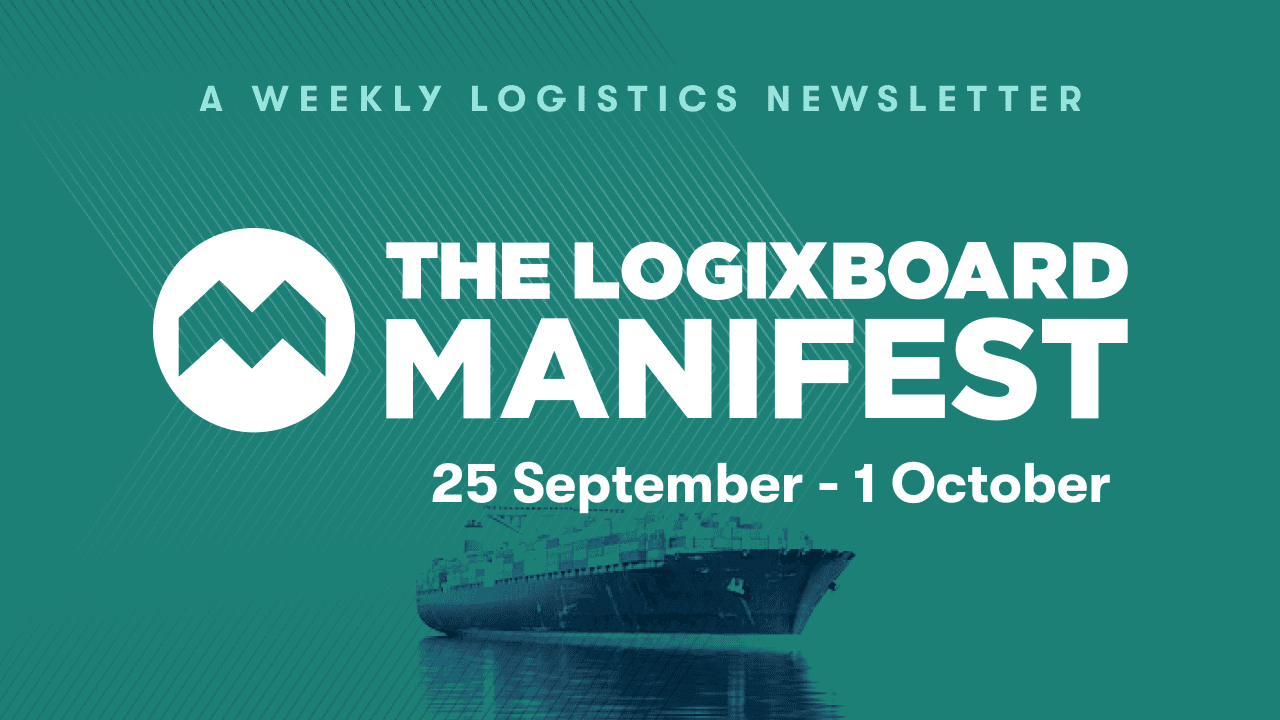In this article
![]()
Spotlight on the impact of the US’ latest interest rate hikes that is now reflected in global trade, as exporters said container shipping rates have fallen by 70%.
![]()
Highlights on a possible beer shortage with rising inflation, Port of New York and New Jersey becoming the busiest port for US-bound trade, and more.
![]()
Trending discussion on supply chain disruptions caused due to Hurricane Ian.
Your Weekly Spotlight
Shipping rates have been on the decline for some time now in 2022. Large retailers are focused on clearing excess inventory before the holiday season. Amidst these tough prospects, stakeholders can look forward to falling shipping rates, even more so after the latest US interest rate hike. On September 21, the Federal Open Market Committee (FOMC) announced another rate hike, raising the federal funds rate by 75 basis points (bps), to a range of 3% to 3.25%.
The impact of the US’ latest interest rate hikes is now being reflected in global trade, as exporters said container shipping rates have fallen by 70% compared with a year earlier – indicating weaker consumer demand and dimmer global economic prospects amid a range of global uncertainties.
The cost of a 40-foot equivalent unit container from Shanghai to the West Coast of North America dropped to $2,684, down nearly 70% from the beginning of the year. For a 20-foot container from Shanghai to Europe, the cost has fallen to $3,163, down about 60% from the beginning of the year, according to a report in the China Securities Journal.
According to the report, the Shanghai Export Containerized Freight Index fell to 2,072.04 points on Friday last week, down 10.4% week-on-week and about 60 percent lower than the beginning of the year. Exporters across the globe have commented on orders from Europe and the US going down by more than 50% so far.
Key Takeaway
Shipping rates started to fall in July as the market was hit by shrinking demand in the European and US markets due to skyrocketing inflation. The US’ latest rate hikes sent shockwaves through more countries globally. Much-reduced port congestion is driving rates down too.
A rate hike in the US is a reaction to rising inflation. It can be expected that this inflation is likely to affect consumer demand. As a result, demand drops too can be expected across the US. Orders are already declining and might slide further, as the US economy deals with growing inflation. Shipping prices, too, are affected as a result. The declining momentum may prolong to next year, depending on how things play out. Shippers and exporters will have to weather the storm if rates dip further.
Highlights
- After the toilet paper, computer chips, tampons, and baby formula shortage, the next shortage may involve beer. With rising ingredient prices and a shortage of CO2, breweries are struggling to produce and we see higher beer prices as a result.
- Port of New York and New Jersey moved 843,191 TEUs (imports + exports) in August, making it the busiest port for US-bound trade.
- Several popular grocery store staples are experiencing shortages this year, including tomatoes, tampons, and Halloween candy. And now you can add butter to the list of harder-to-find items as the holidays approach.
- Pharmacies across the UK, the US, and Europe have all reported shortages of many different drugs, including those often prescribed for menopause, dementia, depression, and pain.
- Food prices have spiked 11.4% over the past year, impacting and changing eating habits, with families dining out less, buying less meat, and giving up splurges.
Trending
After Hurricane Ian’s entry into Florida, systems have been adversely affected across the state and are likely to impact supply chains across the US. Floridians are starting to assess the damage created by Hurricane Ian a day after it slammed into the Gulf Coast as a massive Category 4 storm. By Thursday morning, Ian had been downgraded to a tropical storm, but a threat remains as it continues to bring heavy winds and rain to the state.
As of 11:54 a.m. EDT Thursday, more than 2.6 million Floridians were without power, with some counties, including Hardee, almost completely in the dark. The economic ripple effects of Hurricane Ian will be felt well beyond the storm zone. Nearly 20% of Tampa gas stations reported fuel shortage and access issues.
In a news conference Thursday morning in Tallahassee, Gov. Ron DeSantis said the Florida Department of Transportation (FDOT) is working to make sure roads and interstate highways are open. Most of Interstate 75 remains open, according to FDOT, with some interruptions. Certain bridges and key corridors though have been washed out or adversely affected.
Port Tampa Bay, a major facility for fuel that is mostly barged over from refining centers on the Gulf Coast, remains shut down. FedEx, UPS, U.S. Postal Service and XPO Logistics are reporting delivery delays across the Southeast. UPS, FedEx and the U.S. The Postal Service on Thursday released lists of ZIP codes in Florida where service will be suspended temporarily.
Logistics providers caution that truckload capacity in Florida will continue in the immediate aftermath of the storm. Many carriers will switch to bringing in items for clean-up and repairs and hauling necessities such as water. Some freight may need to be held because of power outages or impassable roads at destinations, and many LTL carriers continue to have limited to no service in Florida. The length of downtime for supply chains will be influenced by whether businesses have alternative sites and redundant manufacturing, so stakeholders need to focus on their risk readiness to fend off Hurricane Ian’s effects.
